Barking's Trams by Felicity Hawksley
One of Barking’s Heritage Volunteers, Felicity Hawksley, has been researching Barking Trams, one of which is featured at the apex of Jake’s mural, along with the Bascule Bridge. 
The lifting bridge took one Barking tram route over the River Roding to Beckton, so Barking workers could get to the Gas Works there.
For almost thirty years, electric trams were a common sight on the streets of Barking, from the 1900’s until their disappearance in the 1930s. 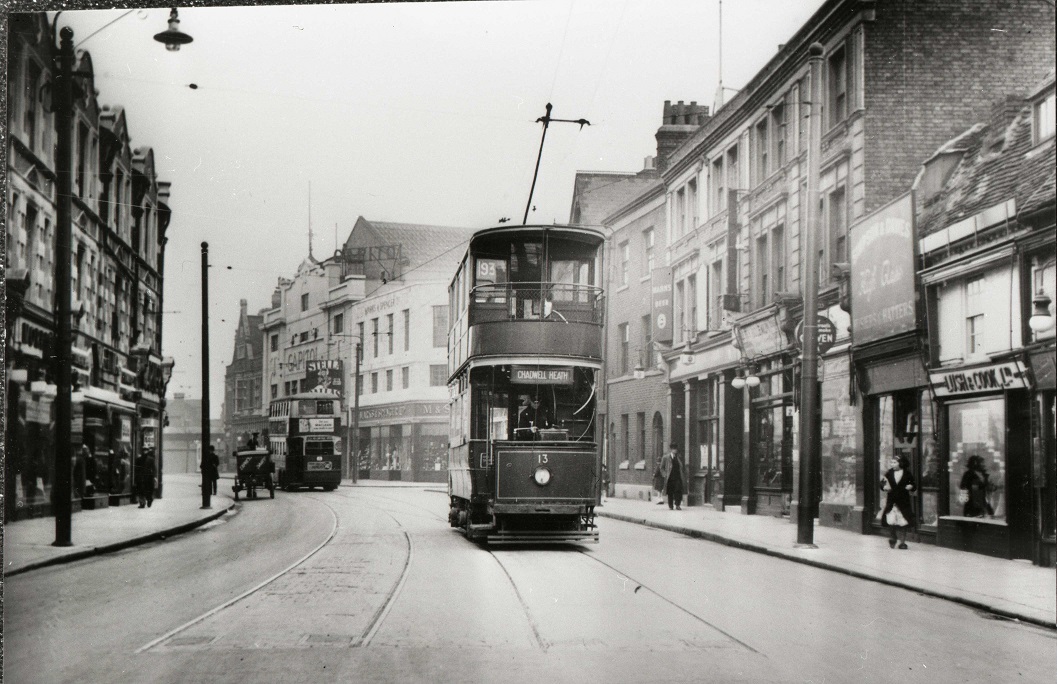
Tram on East Street with Capitol Cinema and M&S store behind it, taken between 1935-1938
Originally, the Council submitted plans in 1898/9 for ten tramlines. Interestingly, the plans bear the names of Gerald Baker, the engineer, but also C J Dawson, well-known local architect. In the end, only four short lines were built in the town centre.
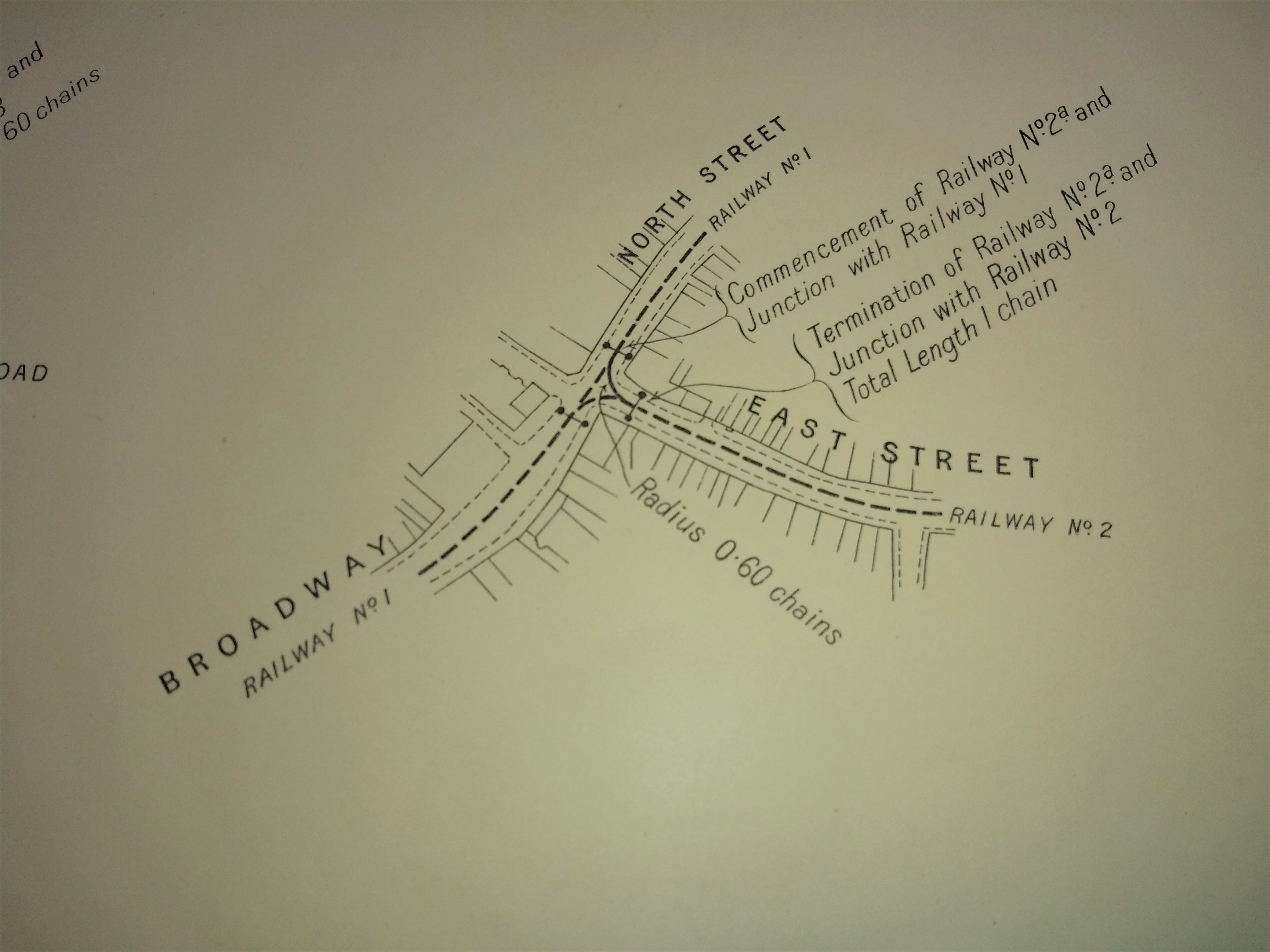
Not everyone favoured the ambitious proposals. The Board of Trade and residents including prominent figures such as the Glennys and Mr W G King opposed them. Officials described the Council’s plans as, “over- reaching” and, in a letter of 1899, General Hutchinson stated that East Street was too narrow for trams. The Council consulted on their plans and records show lists of property owners and tenants in East and Axe Streets and Broadway, including the R White’s factory and the Governors of the United Westminster schools, owners of the Bull Pub and 1-11 East Street. Some 23 objections to the plans were received, 19 of which related to the proposed line along Broadway - Line 1, which ran from the junction with the Beckton line to join up with East Ham trams at the boundary between the two boroughs, crossing the expensively engineered Bascule Bridge over the Roding.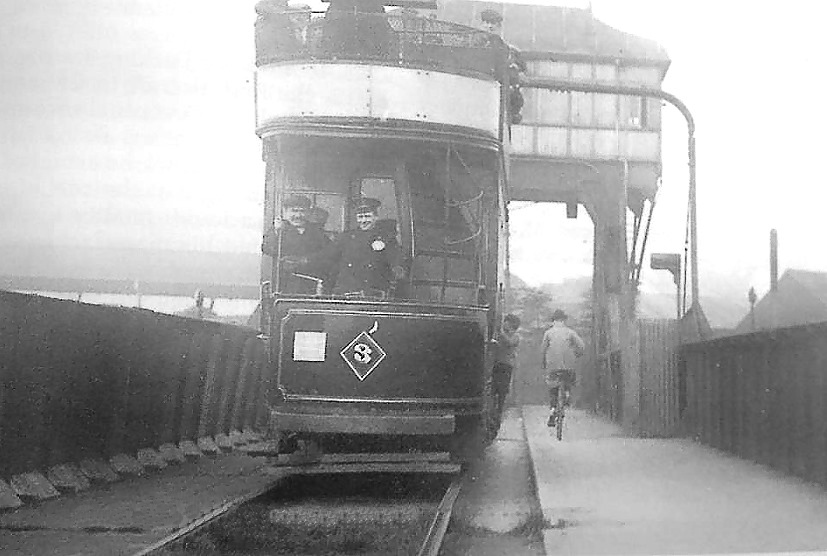
Barking Tram on Bascule Bridge
Many of the property owners felt that the proposed line passed too close to their buildings and some suggested that a double track along the Broadway and North Street would be dangerous. In particular, a petition from the Society of Quakers dated 28/12/98, signed by Leo Godlee, pointed out the hazards which the trams would pose to worshippers and mourners at the Quaker Meeting House who parked their carriages in North Street. In the light of these objections, part of the track in North Street was reduced to single track and the indoor market in Broadway was relocated by the Council to create more space.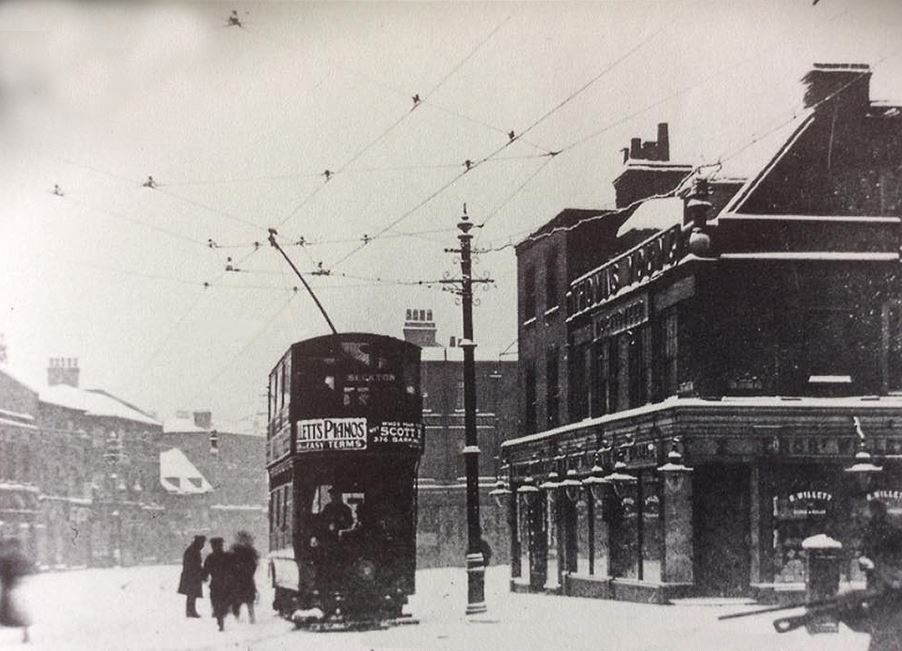
Winter tram on a snowy Barking Broadway, outside Willet's Store
Further objections were raised by the London, Tilbury and Southend Railway Company who suggested that running a single tram route up East Street, past the station, over the level crossing would be hazardous. They wanted the council to pay for the construction of a bridge over the railway line. The Council declined and the Board of Trade ruled that the tram lines should not run past the station but stop a distance of 66 feet either side of the station. These demands created a break in the route, with Line 2 running up East Street to the station and Line 3 running from the station, up Fanshaw Crescent and Ilford Lane to join up with the Ilford Council route. The railway company subsequently paid for a bridge to replace the level crossing in 1907.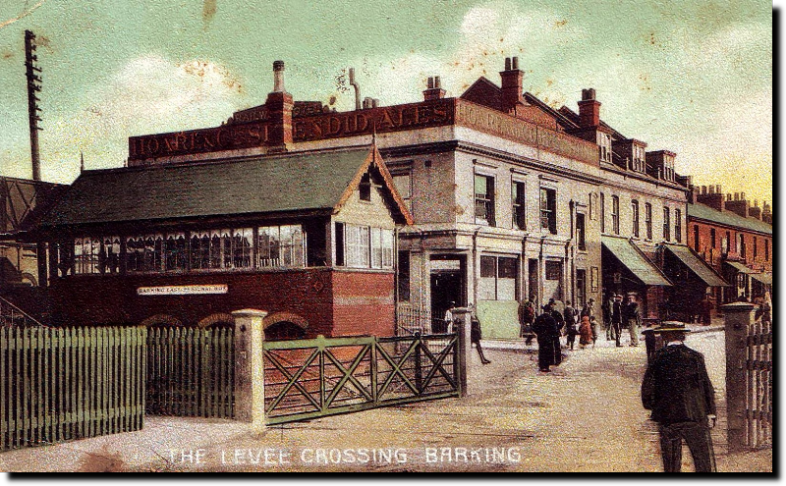
View from Longbridge Road of the level crossing for steam trains before the bridge was built in 1907
Some local landowners stood to gain financially from the sale of their land to make way for the tram tracks. Thomas Matthews was offered £300 an acre for 5.5 acres of his marshland and Mr E, H Glenny offered £5 per square foot to trade his land.
Originally the tram routes were run in conjunction with the neighbouring councils. By 1914, these arrangements ended due to financial pressures, and Barking’s trams were only seen in the town centre. 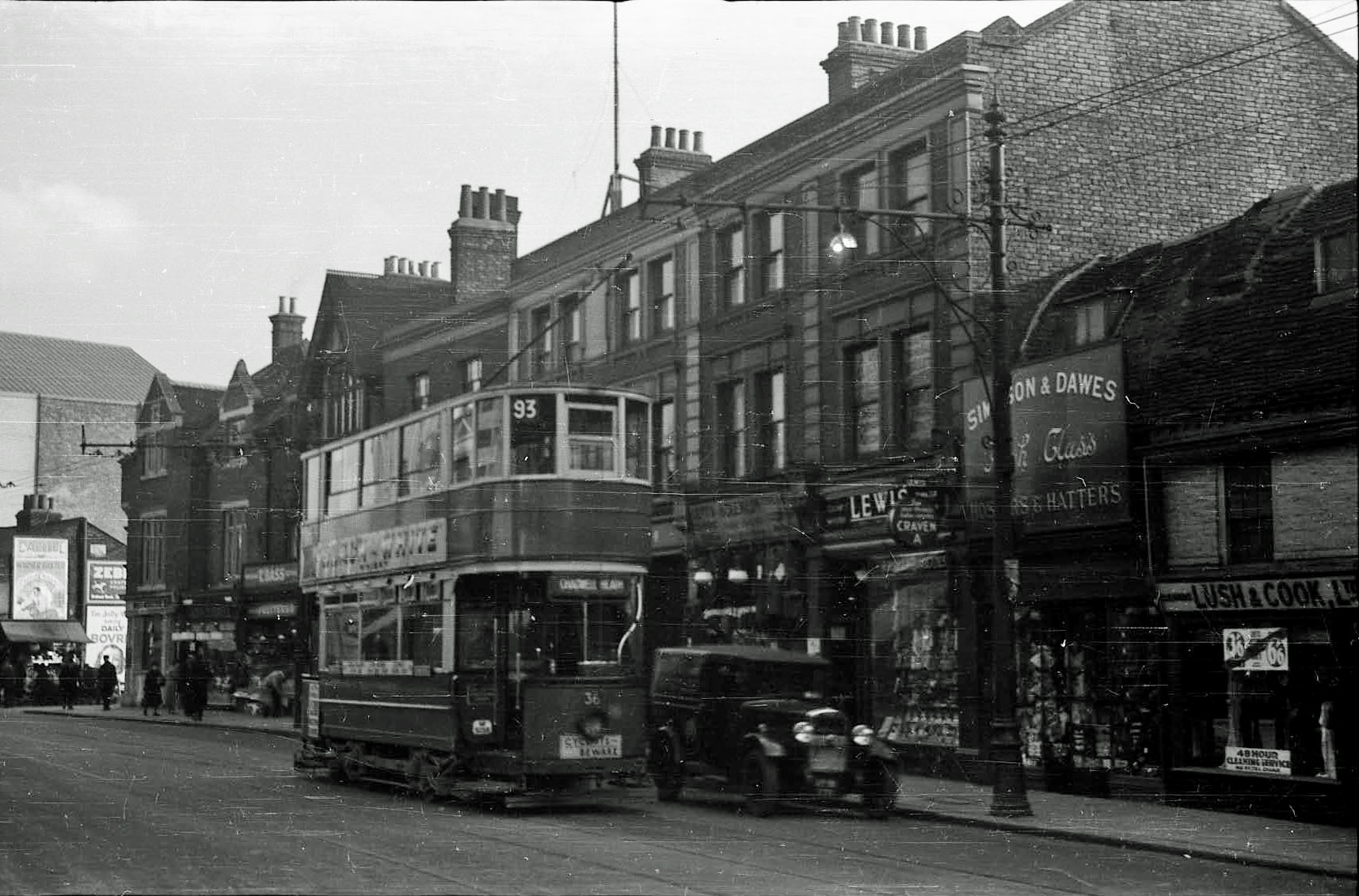
Tram and motor vehicle on East Street - the trams were replaced by trolley buses before the World War II
At this time only 2.6 miles of Barking track remained. The routes were loss making and the Council sold part of its tram fleet - car 6 was seen on Woodham Ferrers being used as a hen house. The final demise of the Barking trams came in 1938 when they were replaced by trolley buses and the tracks were removed. A tram on the mural marks their interesting if brief history in Barking.
Thank you to London borough of Barking & Dagenham's Archives, for the use of their historic photographs.
